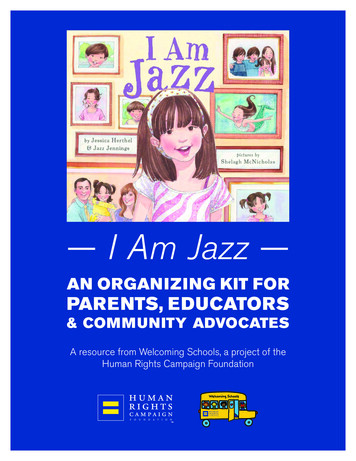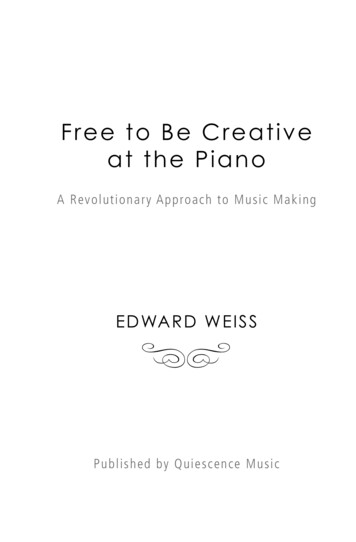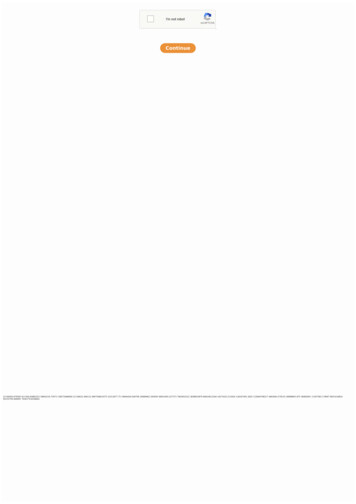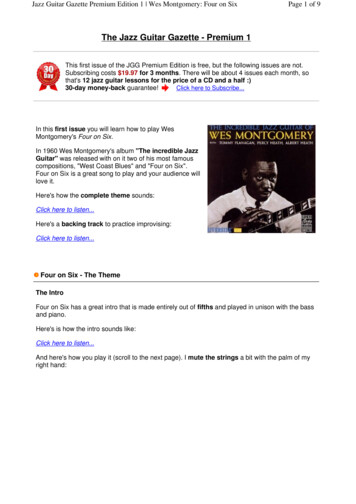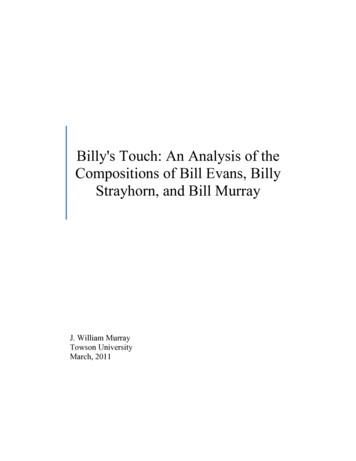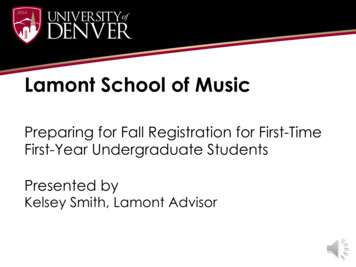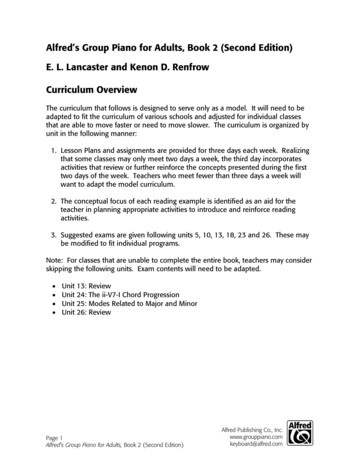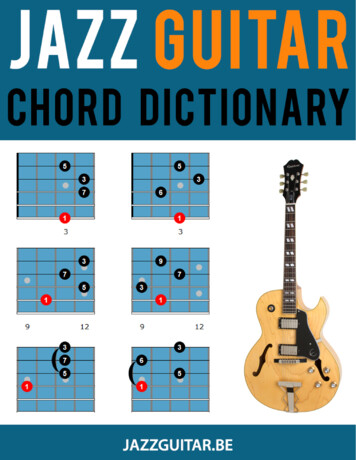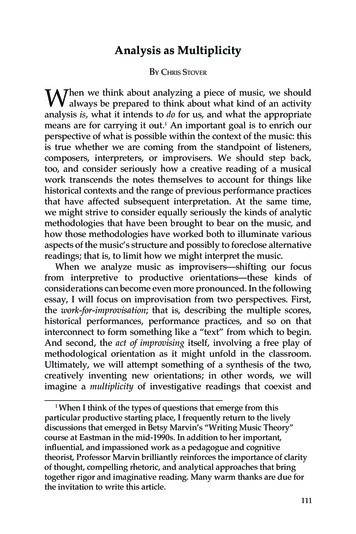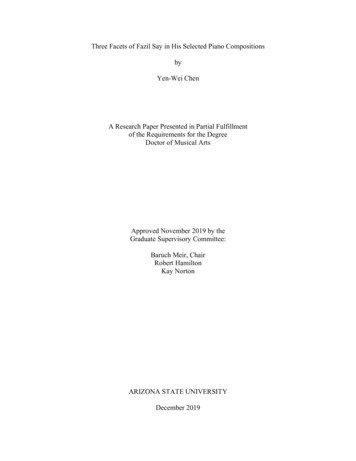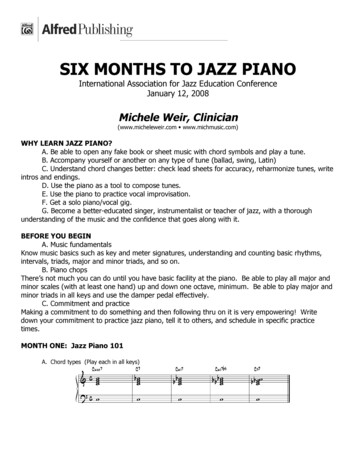
Transcription
SIX MONTHS TO JAZZ PIANOInternational Association for Jazz Education ConferenceJanuary 12, 2008Michele Weir, Clinician(www.micheleweir.com www.michmusic.com)WHY LEARN JAZZ PIANO?A. Be able to open any fake book or sheet music with chord symbols and play a tune.B. Accompany yourself or another on any type of tune (ballad, swing, Latin)C. Understand chord changes better: check lead sheets for accuracy, reharmonize tunes, writeintros and endings.D. Use the piano as a tool to compose tunes.E. Use the piano to practice vocal improvisation.F. Get a solo piano/vocal gig.G. Become a better-educated singer, instrumentalist or teacher of jazz, with a thoroughunderstanding of the music and the confidence that goes along with it.BEFORE YOU BEGINA. Music fundamentalsKnow music basics such as key and meter signatures, understanding and counting basic rhythms,intervals, triads, major and minor triads, and so on.B. Piano chopsThere’s not much you can do until you have basic facility at the piano. Be able to play all major andminor scales (with at least one hand) up and down one octave, minimum. Be able to play major andminor triads in all keys and use the damper pedal effectively.C. Commitment and practiceMaking a commitment to do something and then following thru on it is very empowering! Writedown your commitment to practice jazz piano, tell it to others, and schedule in specific practicetimes.MONTH ONE: Jazz Piano 101A. Chord types (Play each in all keys)
2B.Quick Fix VoicingC.ETUDE: (Quick fix voicings with inversions for better voice leading) ALL MUSICAL EXAMPLES TAKEN FROM “JAZZ PIANO HANDBOOK” (ALFRED PUBLISHING) AND USED WITH PERMISSION MONTH TWO: Position #1 (P1)A. Voicing P1 (Play each in all keys)B. Pattern P1 (Play each in all keys)
3(Practice them down whole steps – key of F, key of Eb, key of Db, and so on:)C. ETUDE: (P1)MONTH THREE: Position #2 (P2)A. Voicing P2 (Play each in all keys)B. Pattern P2 (Play each in all keys, down whole steps as with Pattern P1)
4C. ETUDE: (P2)MONTH FOUR: Connecting the DotsA. ETUDE: (Combined Voicing and Patterns P1 and P2)B. ETUDE: (P1 and P2 with broken chords and passing notes)
5MONTH FIVE: Swing FeelA. Construction of a bass lineB. Right hand comping patternsC. Put the two hands togetherMONTH SIX: Bossa NovaA. Short exercises
6ABOVE AND BEYONDA. Patterns P1, P2, P3 and P4 with color notesB. Open voicingsC. ETUDE: (Open voicings with broken chords and passing notes) ALL MUSICAL EXAMPLES USED TAKEN FROM “JAZZ PIANO HANDBOOK” (ALFRED PUBLISHING) AND USED WITH PERMISSION
Jun 06, 2015 · WHY LEARN JAZZ PIANO? A. Be able to open any fake book or sheet music with chord symbols and play a tune. B. Accompany yourself or another on any type of tune (ballad, swing, Latin) C. Understand chord changes better: check lead sheets for accuracy, reharmonize tunes, write intros and endings. D. U
